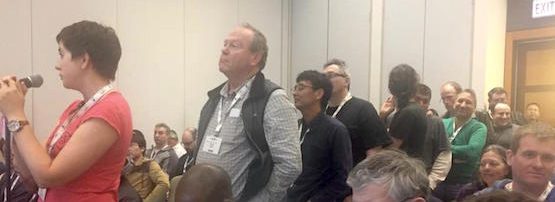
The IPv6 Operations Working Group (V6OPS) met here in Chicago. It was a packed room with lots of great energy and many constructive conversations about work in progress.
Fred Baker, who is now a Cisco emeritus, continued to chair the group and is considering a minor revision of the charter to include a more explicit need to recognize an emerging future: IPv6-only networks. Apart from this news, two other significant topics came up, which I’d like to share.
The first was the continuing discussion of “how to find a DNS server”.
A lot of people pragmatically want to go with structured network management options which they use right now; prescriptive lists of prefixes bound to known hosts, and the IPv6 version of this doesn’t provide for DNS server configuration. However, RDNSS, the mechanism which is designed to do this, can be implemented inside the RA function of SLAAC in less than 10 lines of C code, and according to one expert in the room that includes error handling.
This really needs to be nailed down, especially if we’re going to address Fred’s concerns of an IPv6-only future network. The common fallback position most dual stack networks have right now, pragmatically, is to use the DNS configuration coming from IPv4 DHCP.
The second topic was a practical review of Apple’s Happy Eyeballs work.
The Apple engineers doing the work are both keen participants in the IETF and have been doing a huge Internet-wide experimental review of how Apple product copes with a dual stack network, chooses the best (and hopefully, when appropriate, the IPv6) path to use.
They’ve got some simple modifications they want to see implemented to do this, and there was a long microphone line of comments and feedback, even some pointed suggestions to start increasing the delay added to the kick-off of the IPv4 connection – one speaker suggested an additional 15ms of delay per year!
Some of this work recognizes what’s been in sunset4, but also of the emerging reality that we already have a worldwide IPv6 network. And with CDN support of IPv6 it’s entirely plausible for people to configure for a future v6-only world right now.
The views expressed by the authors of this blog are their own and do not necessarily reflect the views of APNIC. Please note a Code of Conduct applies to this blog.

“in less than 10 lines”
I think in cisco it is just one line:
ipv6 nd ra dns server
But on how many IOS-versions is this line supported?